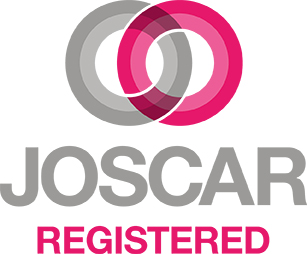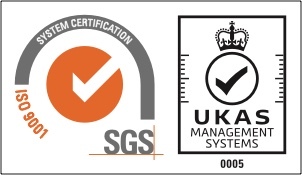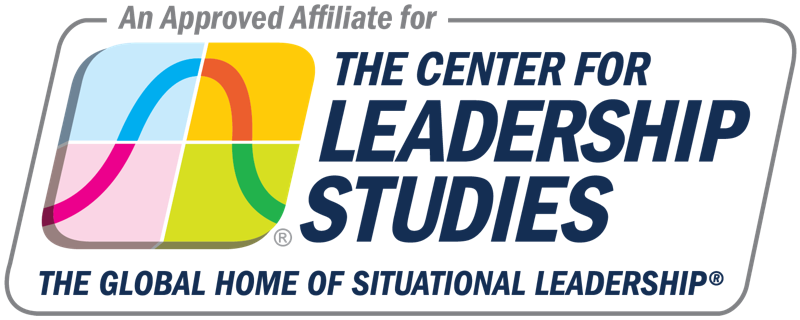
The workplace is comprised of people. Human relations are the interactions that occur with, and through, people. An individual’s effectiveness in the workplace often depends on their personality, attitudes and values, along with their motivation to succeed.
Concurrently, the perception, attitudes and values of colleagues in the workplace play a role in determining the individual’s effectiveness - 90% of execution is interaction between people who think and behave differently.
Personality and attitude dictate how one responds to conflict, crisis, and other typical workplace situations. Understanding the characteristics of employees is crucial for an organisation to operate successfully. The skill of a great leader is the ability to turn those different characteristics of individuals within teams into synergy, assisting in business competitiveness.
Deep-level diversity consists of the attitudes, beliefs, values and commitment to an organisation that different individuals in a team might have. This is in contrast to the traditional method of expressing diversity through heterogeneity in categories such as race, gender, or age, or what is called 'surface-level diversity'. According to Fast Company, this type of deep-level diversity also corresponds to a higher ROI, service diversification and sales growth, as well as more internal communication and an increase in assets.
The impact of team diversity on team performance is of vital concern as today's organisations rely on teams to accomplish organisational goals. On a team level, on average 79% of performance is lost because of the clash of values and personalities combined with poor leadership. All three of which stem from the same source - not understanding the blueprint of why people think and behave differently.
It is critical, therefore, that leaders are trained in team leadership in order to understand the deep-level diversity of the individuals of their teams, including their values, their personalities and their behaviours.
1. Understanding employee values
Values refer to stable life goals that people have, reflecting what is most important to them. Values are established throughout one’s life as a result of accumulating life experiences and tend to be relatively stable. The values that are important to people tend to affect the types of decisions they make, how they perceive their environment, and their actual behaviours.
“In my view the successful companies of the future will be those that integrate business and employees' personal values. The best people want to do work that contributes to society with a company whose values they share, where their actions count and their views matter.” Jereon van der Veer
Value attainment is one reason why people stay in a company, and when an organisation does not help them attain their values, they are more likely to decide to leave if they are dissatisfied with the job itself.
2. Understanding employee personalities
Personality encompasses the relatively stable feelings, thoughts, and behavioural patterns a person has. Our personality differentiates us from other people, and understanding someone’s personality gives us clues about how that person is likely to act and feel in a variety of situations.
"Where all think alike, no one thinks very much." Walter Lippmann
In order to effectively manage organisational behaviour, an understanding of different employees’ personalities is helpful. Having this knowledge is also useful for placing people in jobs and organisations.
3. Understanding employee behaviour
Our behaviour is not only a function of our personality, values, and preferences, but also of the situation. We interpret our environment, formulate responses, and act accordingly. Perception may be defined as the process with which individuals detect and interpret environmental stimuli.
“Personality is the organised, developing system within the individual that represents the collective action of that individual’s major psychological subsystems.” Professor John Mayer
What makes human perception so interesting is that we do not solely respond to the stimuli in our environment. We go beyond the information that is present in our environment, pay selective attention to some aspects of the environment, and ignore other elements that may be immediately apparent to other people. Our perception of the environment is not entirely rational.
Many leaders are busy, stressed and they have to focus on the bottom-line, they don't have too much time to care about feelings, well-being, etc. That is understandable on a personal level, but the fact is that concentrating on those seemingly less important and urgent issues would significantly help them in achieving all their business priorities and goals.
Managing teams of individuals for success
When companies put smart people in teams, they are hoping to create synergy by combining their skills, but in reality, those differences can turn into liabilities. A team is made up of individuals, and personality can be the mortar that holds the team together or the chisel that tears it apart. The makeup of the team, the demands, and what is needed to be successful is dependent on the individuals. They have to be able to work together, and they have to be engaged with each other.
There can be great energy harnessed from team members’ different personality traits if managed properly. Leaders must possess the skills to build their teams around the right personalities and to manage those personalities. We all see the world from our own unique perspective, our own paradigm. When we’re part of a team, we bring that paradigm to the team environment. Good and bad personality traits within a team can offset one another and build on each other which lead to synergies. Rather than ask each team member to conform to a group norm, leaders must recognise and utilise personality differences to ensure high performance.
For example, some people just seem to have the 'gift' of working with a team and leading them to success. These are hard-working people with a mind for collaboration and putting the success of the team above their own ego. This type of person will help others achieve their goals by working with them to resolve frustrations, remove impediments, and create an atmosphere of mutual satisfaction. This type of team player encourages the rest of the team to work collaboratively towards the team goals.
Others may not have collaborative personality traits within them. Although their intentions might be good, they may not see eye-to-eye with team members on processes, methods or goals. Often this type of person will be confrontational and impatient. Even though they would like the team to succeed, sometimes their own work ethic or personality gets in the way. This type of person can learn to work better within a team if they recognise their impact on others and are willing to make changes to their style.
There are several characteristics of successful teams but one key characteristic is the diversity in team members. Diversity in culture, background, age, and ethnicity are important for high performing teams, but so too is cognitive diversity. All teams are made up of a diverse range of personalities, but it is the high performing teams that leverage their personality differences and mitigate and manage inhibitor personalities, to achieve their common goal.
Understanding your team member personalities, values and behaviours
On an individual level, most people use only 10% of their personalities as we are creatures of habit…90% is waiting to be unlocked.
Learning more about your own personality traits can help you understand your own strengths and weaknesses, which can help in selecting team members that will complement you. Learning about others' personalities can help you develop the ability to view situations from their perspectives and improve your own psychological peripheral vision (Butler, 2000), which can be a crucial leadership skill to help make the team successful.
Personality profiling can be a very useful tool in understanding your individual team members’ communication styles, motivations and reward preferences. It can help you understand how to relate to people better and work with them.
The DiSC® model provides a common language that people can use to better understand themselves and adapt their behaviours with others. DiSC® measures your tendencies and preferences, or in simple terms - your patterns of behaviour.
The DiSC® model discusses four reference points:
- Dominance – direct, strong-willed and forceful
- Influence – sociable, talkative and lively
- Steadiness – gentle, accommodating and soft-hearted
- Conscientiousness – private, analytical and logical
Knowing your DiSC® profiles can help you and your team:
- Increase your self-knowledge: how you respond to conflict, what motivates you, what causes you stress and how you solve problems
- Improve working relationships by recognising the communication needs of team members
- Facilitate better teamwork and teach productive conflict
- Manage more effectively by understanding the dispositions and priorities of employees and team members
- Become more self-knowledgeable, well-rounded and effective leaders
Most personality psychologists believe that traits and situations are interactive. This is one reason why DiSC® can be so helpful, as you can learn to adapt your own responses depending on the DiSC® style of the person you're speaking with or your situation. So as a leader, you might choose not to use the behaviour you're most comfortable with, but instead use one you know will be more effective with your entire team.
Leading your team - knowing their deep-level diversity
The ability to recognise, and adapt to the unique behavioural tendencies, communication preferences and priorities that drive an individual’s performance is critical to managerial success. The Situational Leadership® Model is a timeless, repeatable framework for leaders to match their behaviours with the performance needs of the individual or group that they are attempting to influence.
Situational Leadership® is about being competent and confident in most situations by having a wide of range perspectives and behavioural styles combined with real self-awareness. The principles of the model include the theory that there is no single best method of leadership. The model proposes that, in order to lead and manage individuals or teams in the most successful way, a leader must adapt his or her style to suit the Performance Readiness of those they are attempting to lead.
The Situational Leadership® Model provides leaders with an understanding of the relationship between an effective style of leadership and the level of readiness followers exhibit for a specific task
Situational Leadership® is based on the relationship between leaders and followers and serves as a framework to analyse each situation based on the Performance Readiness® Level that a follower exhibits in performing a specific task, function or objective. Then, based on the leader’s diagnosis, the necessary amounts of relationship behaviour and task behaviour are applied and communicated to the follower in order to support their needs and advance development.
View all the upcoming Situational Leadership® public course dates here






